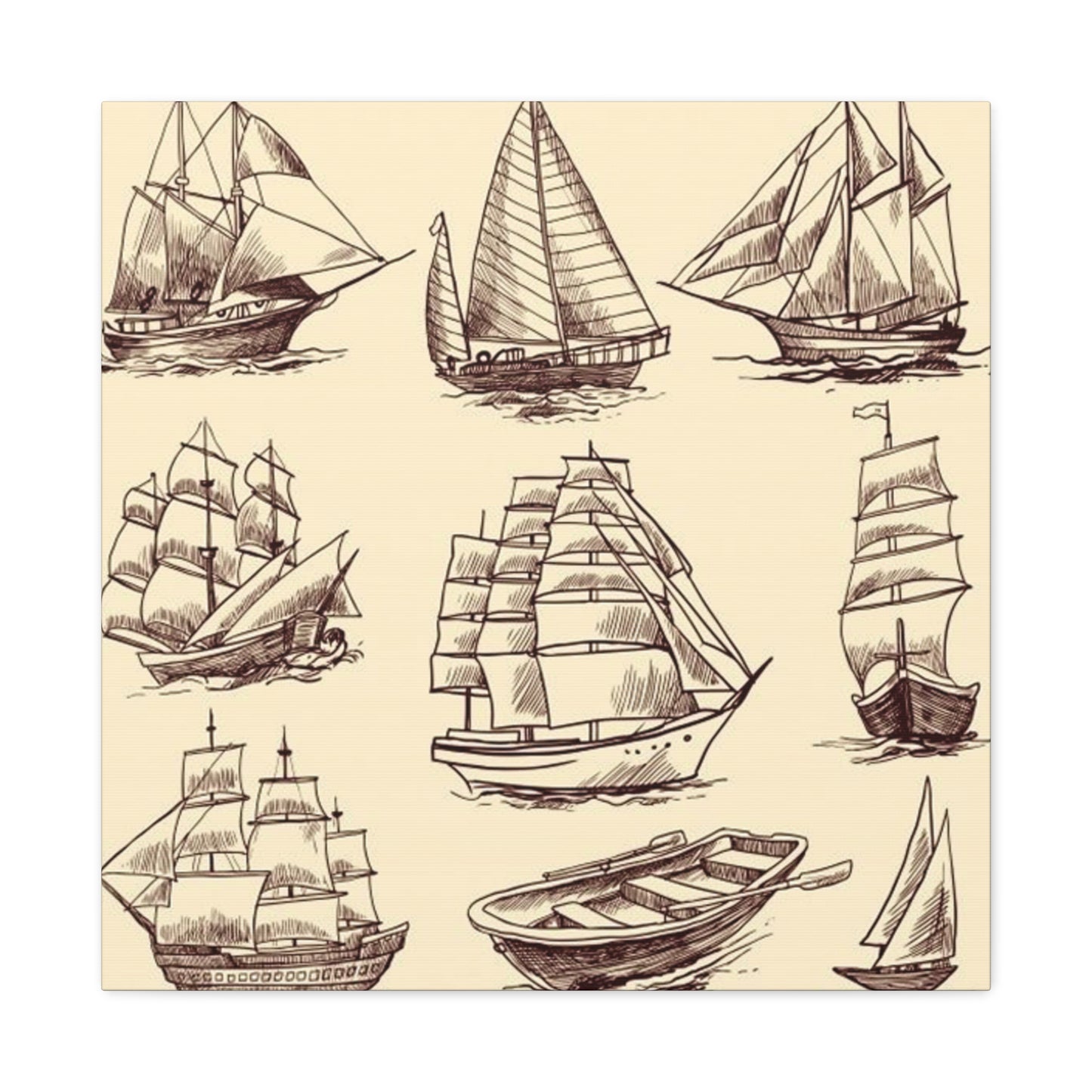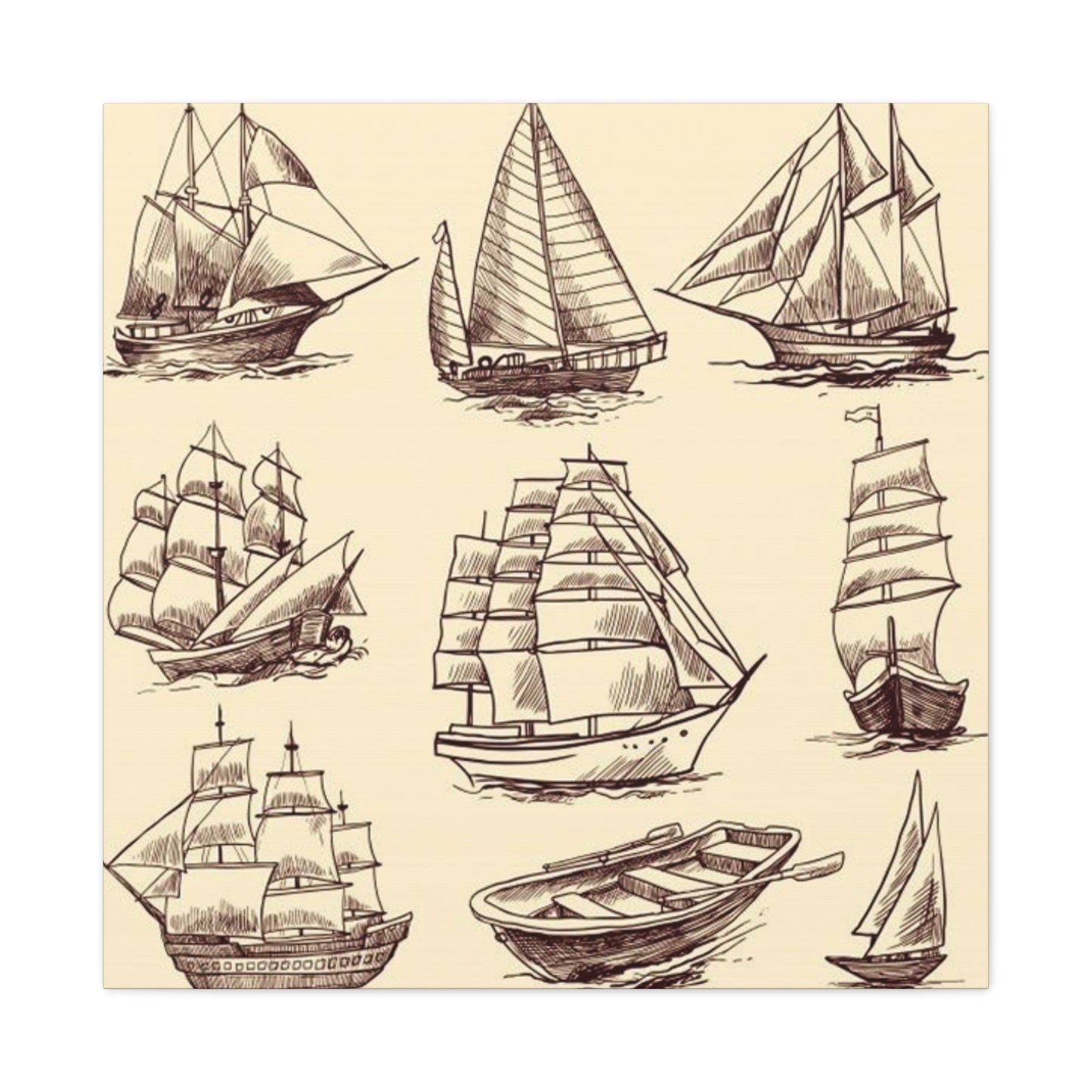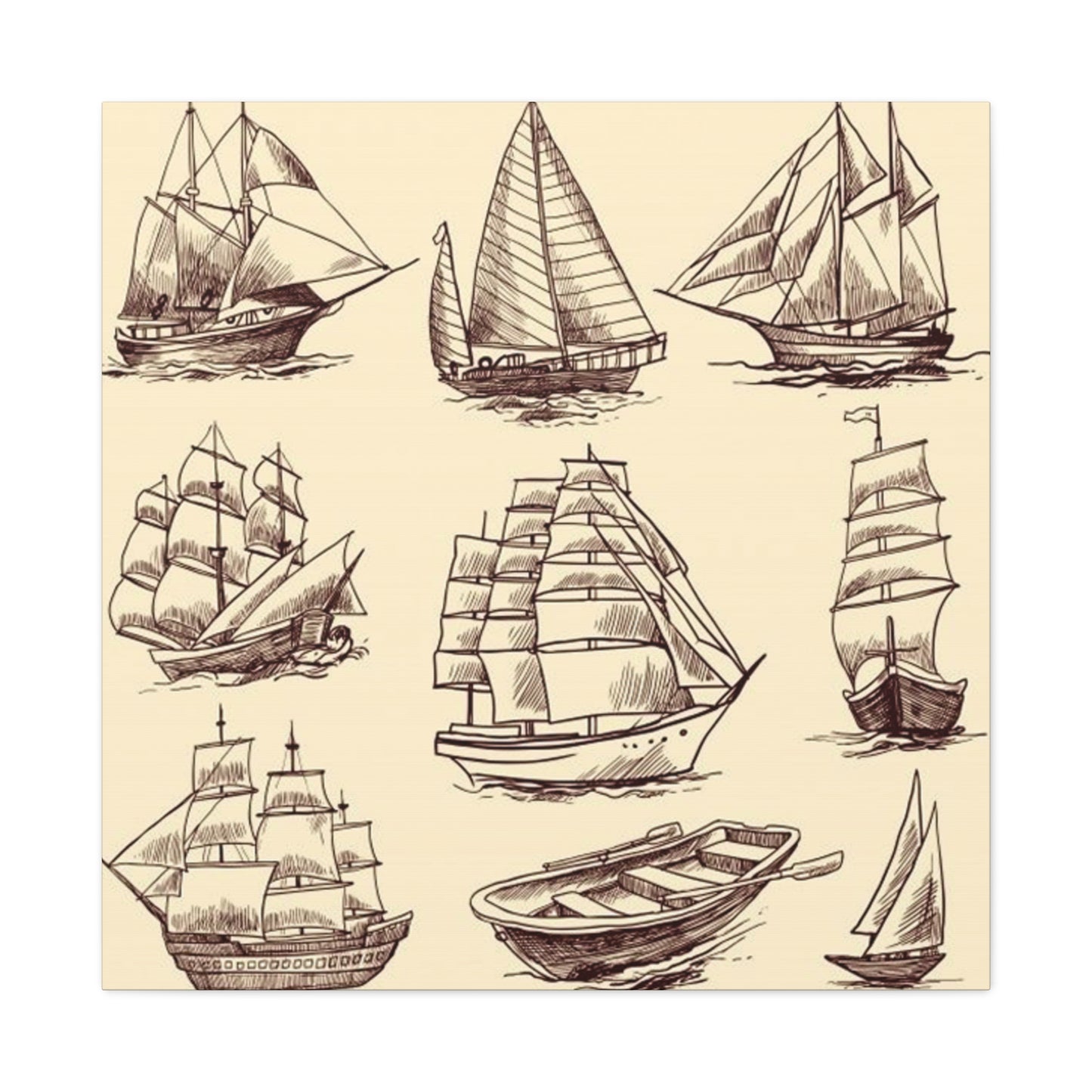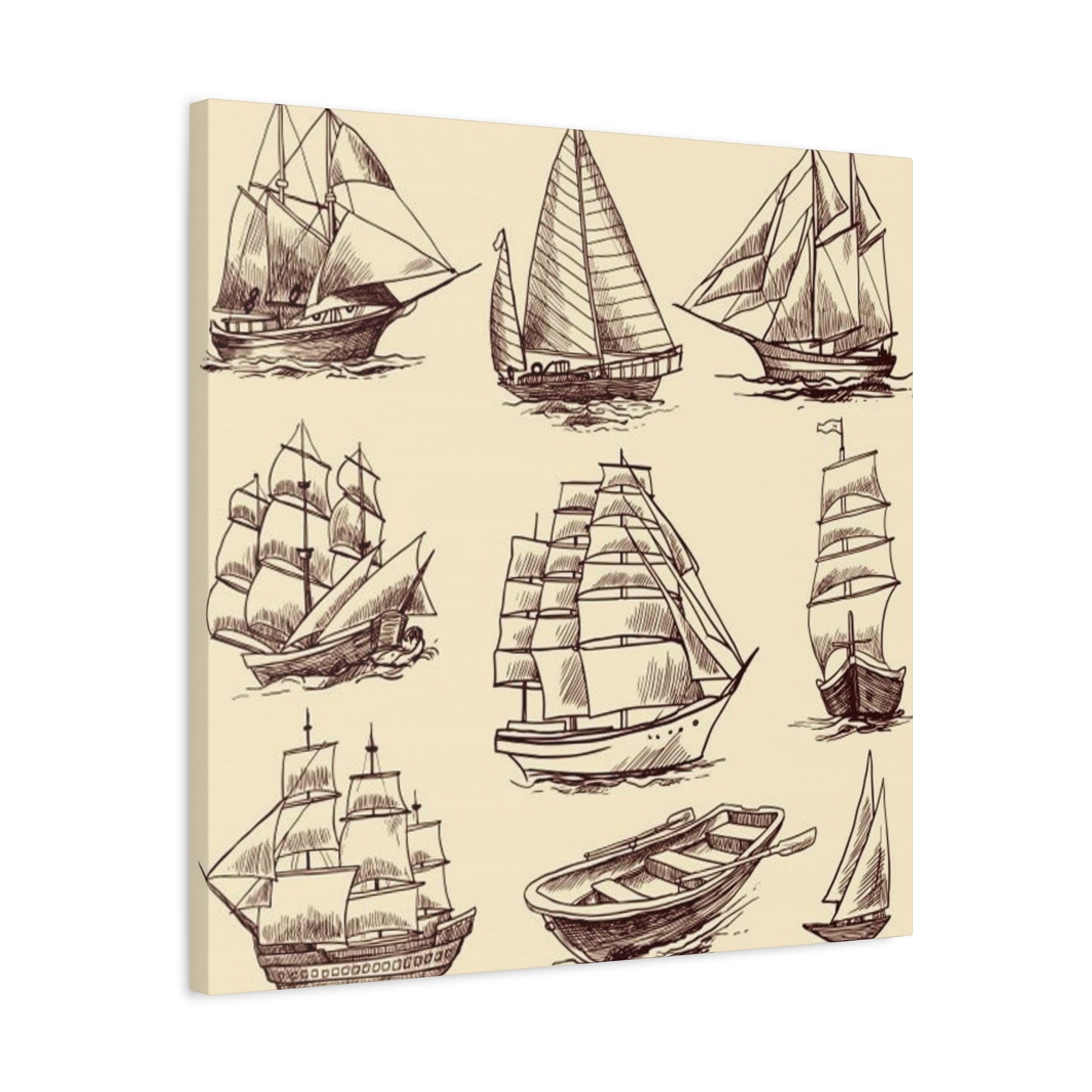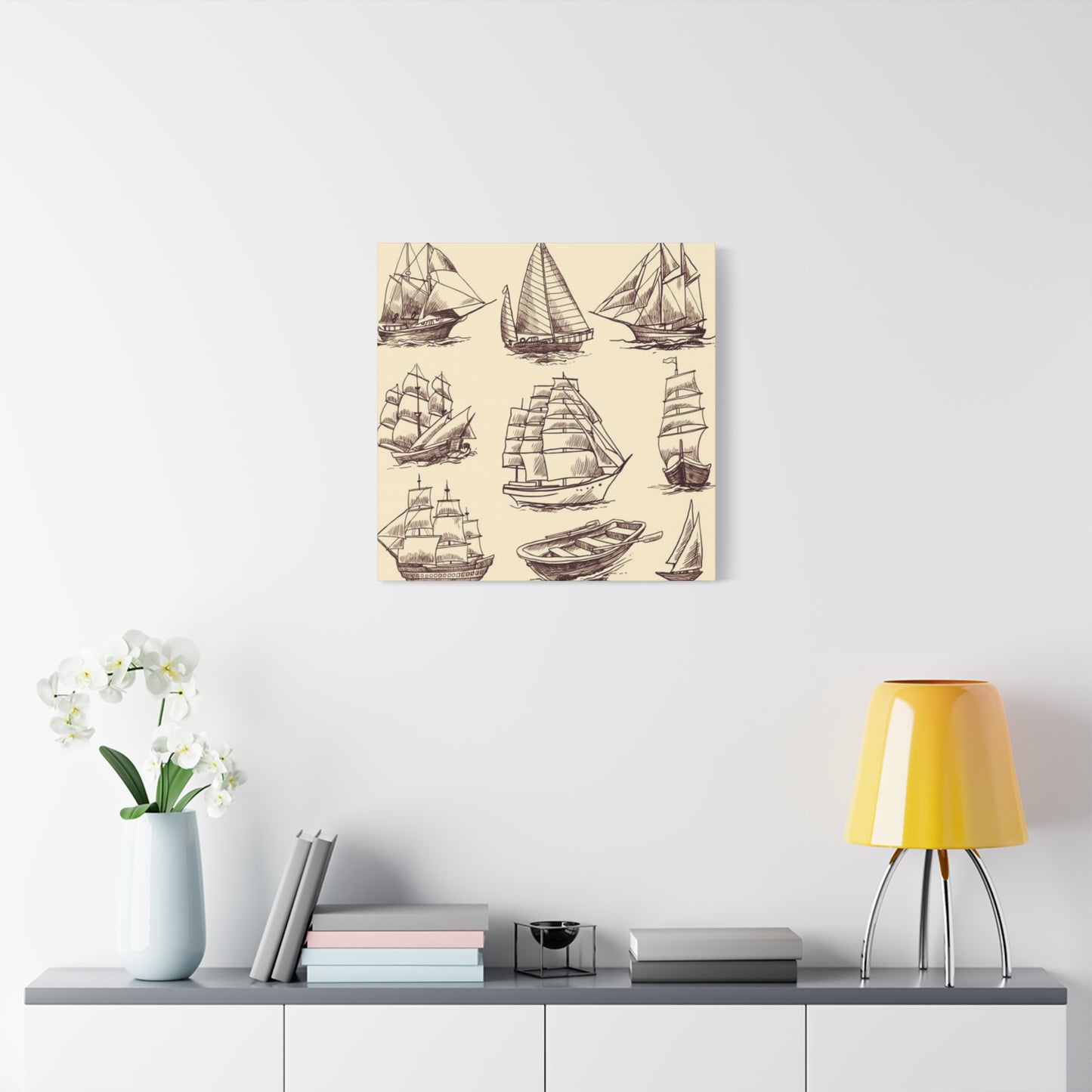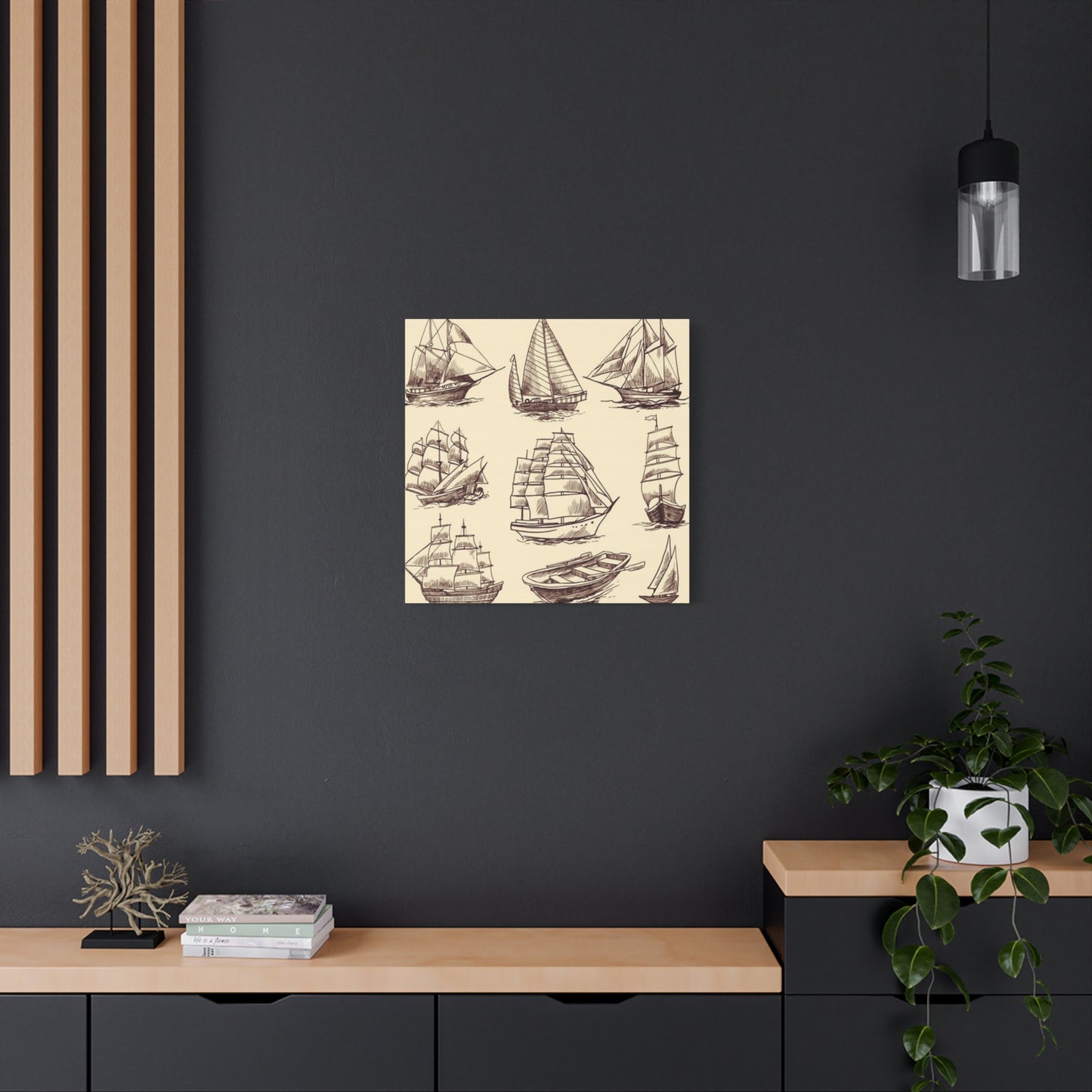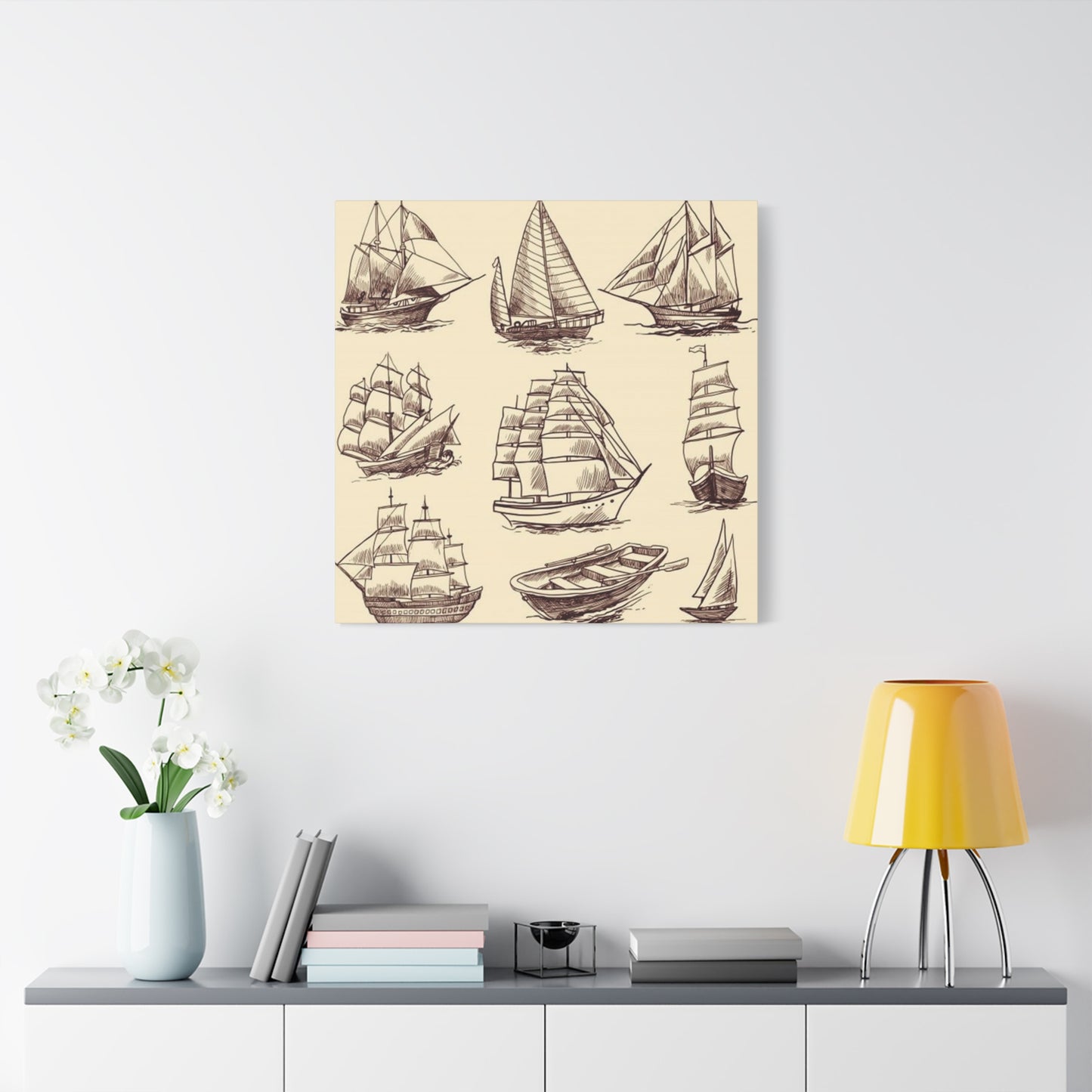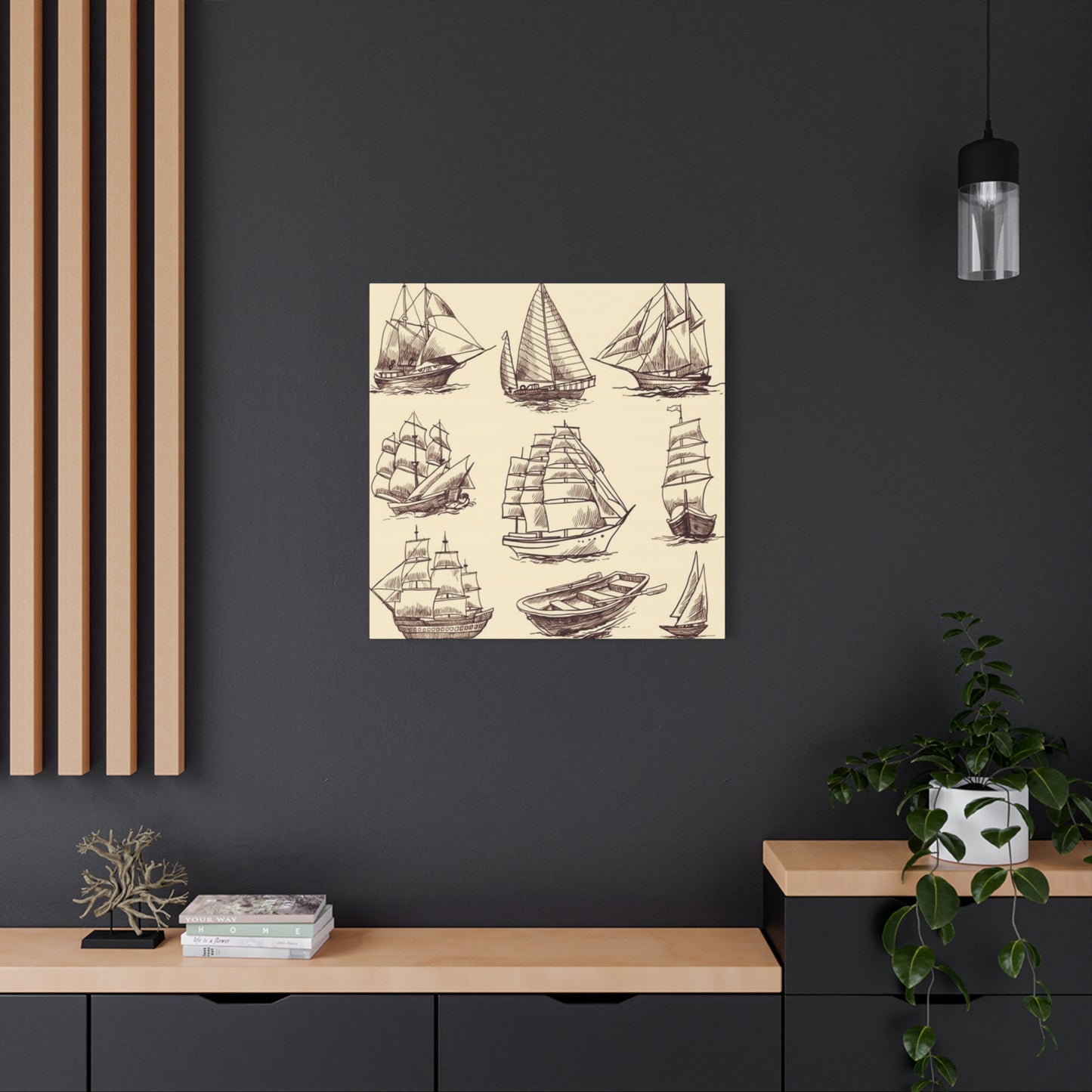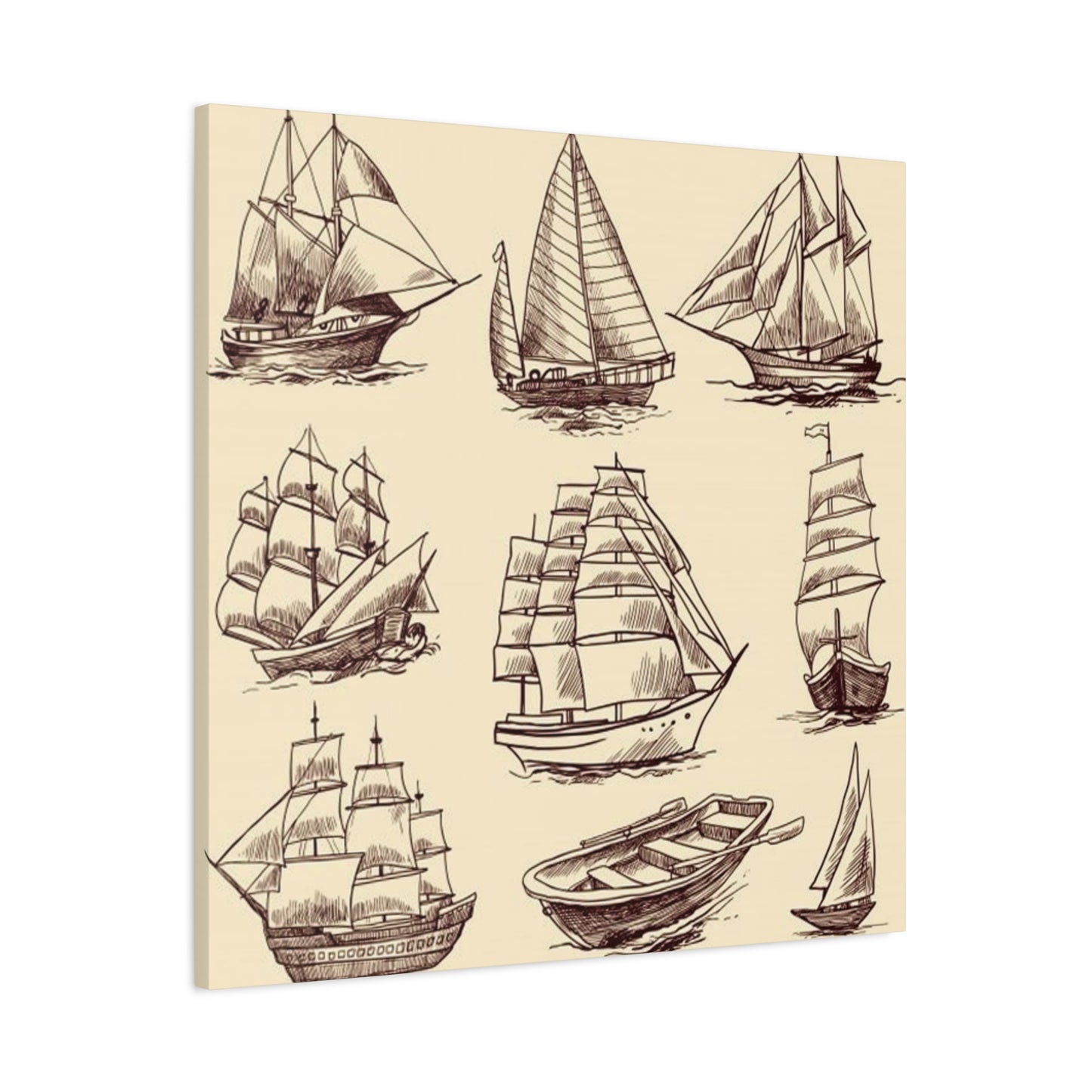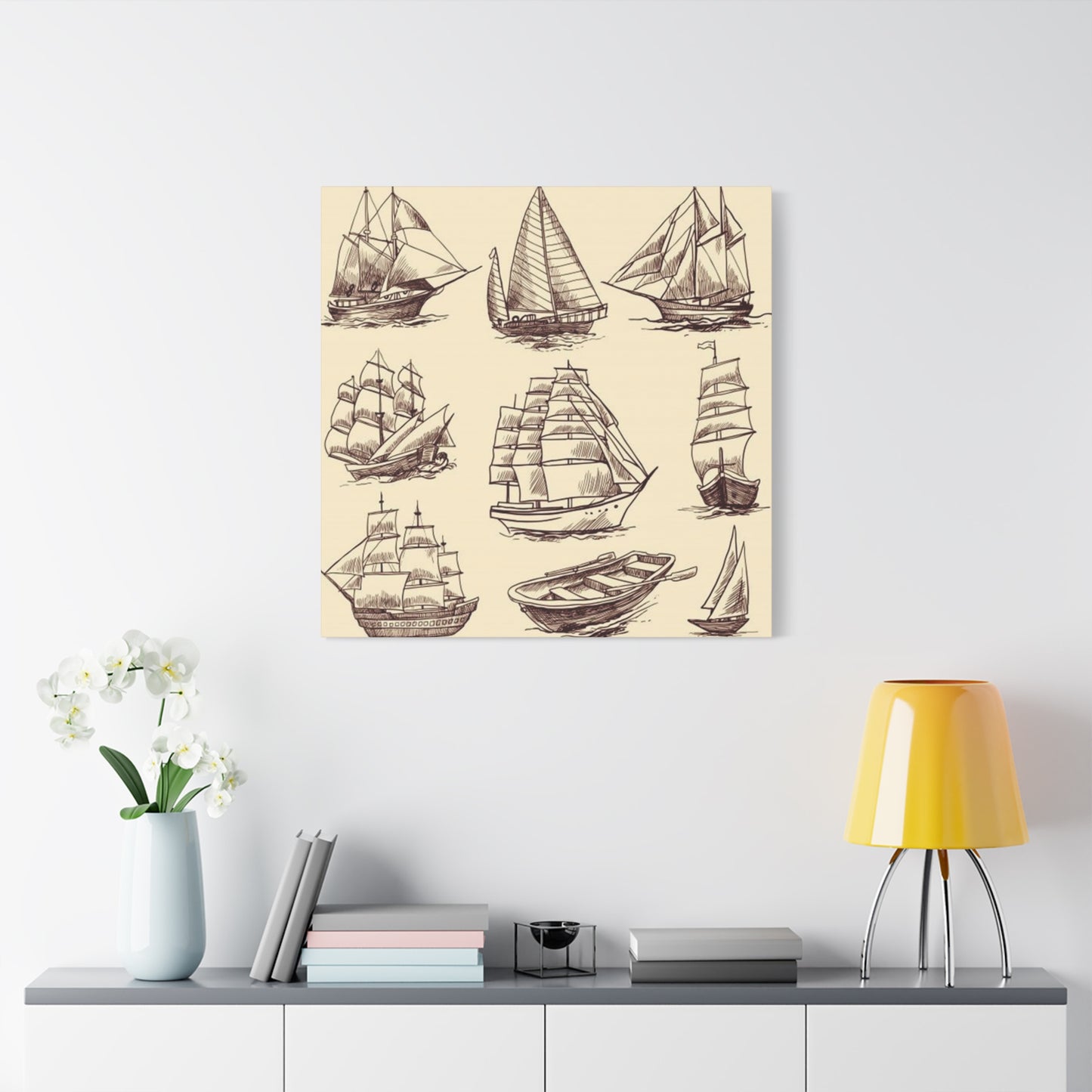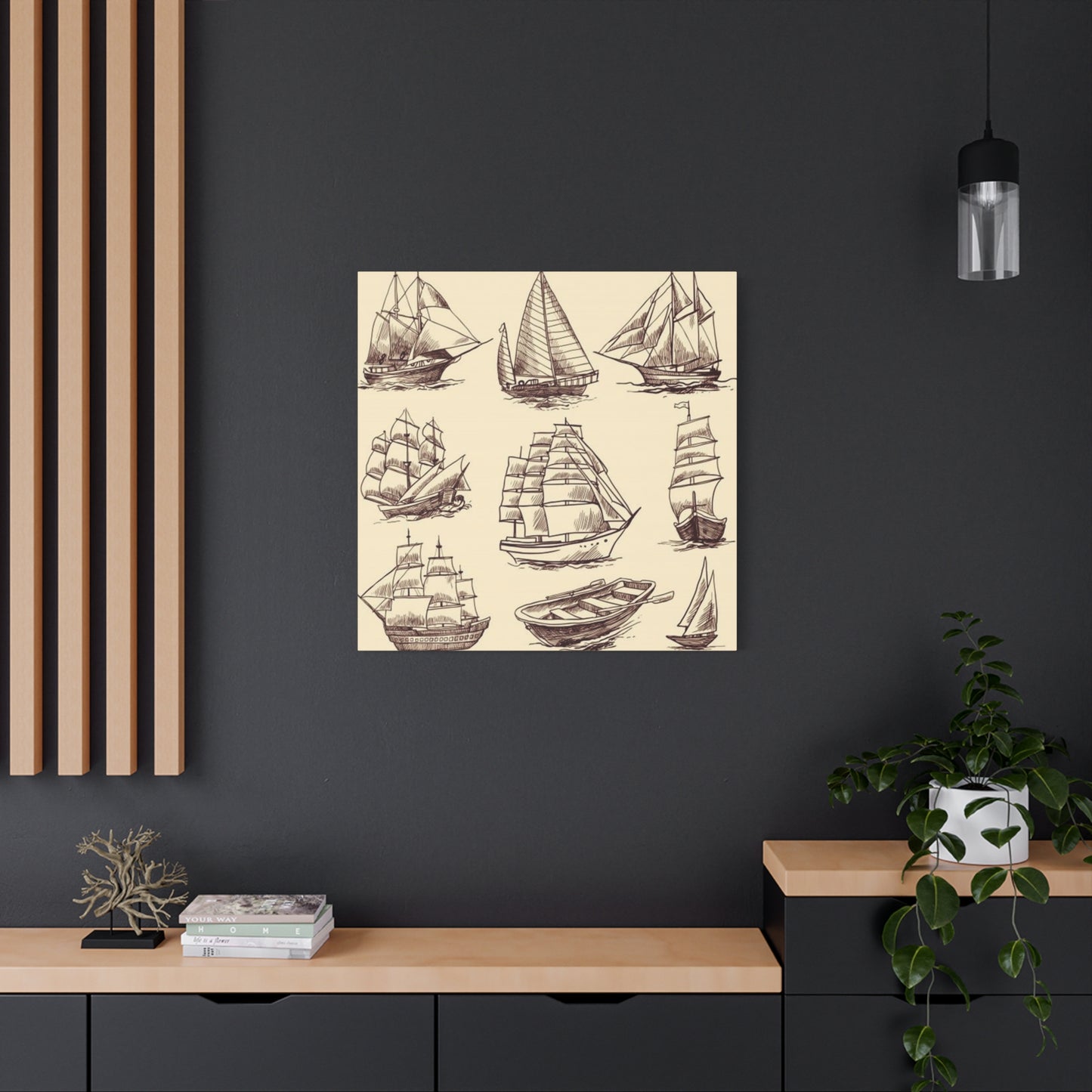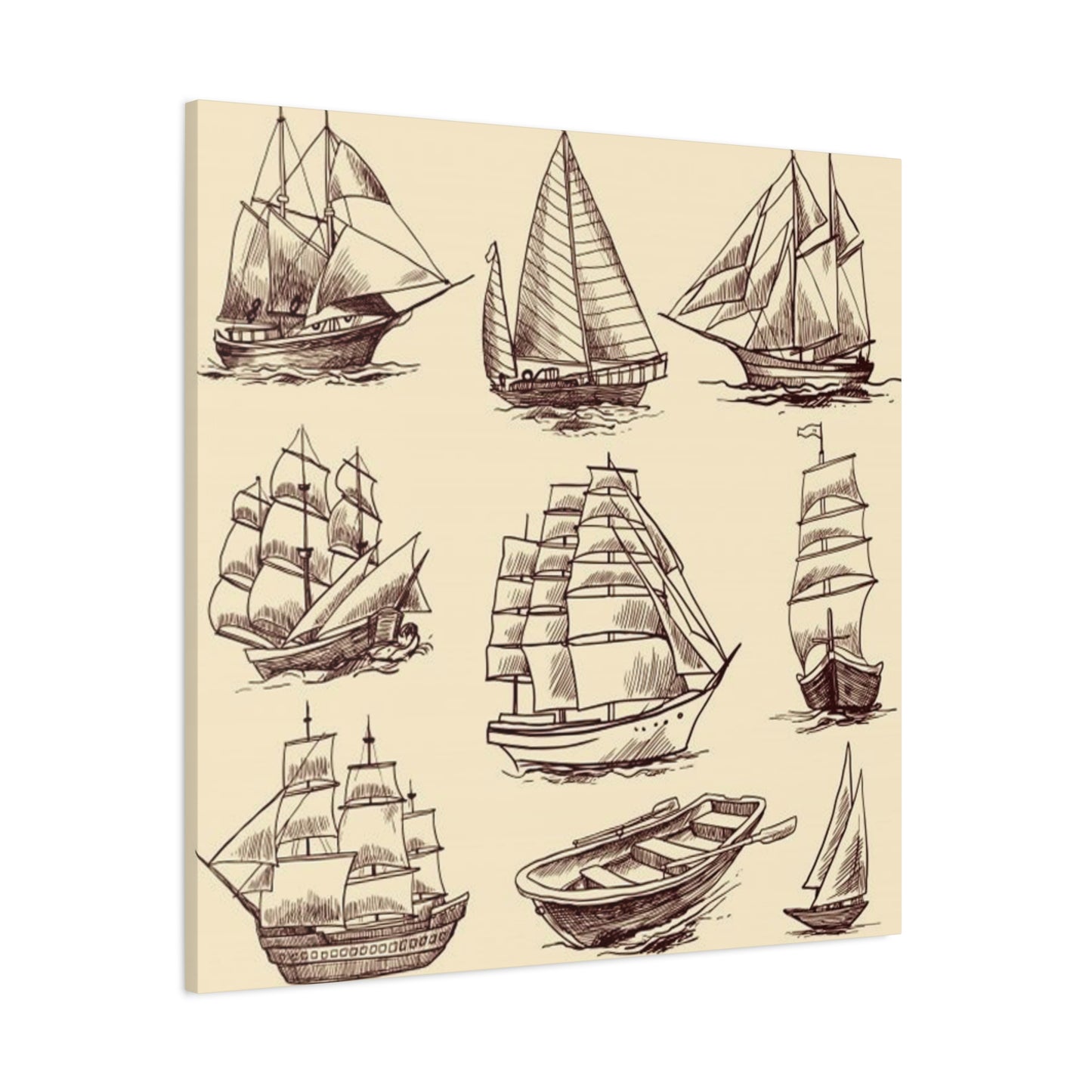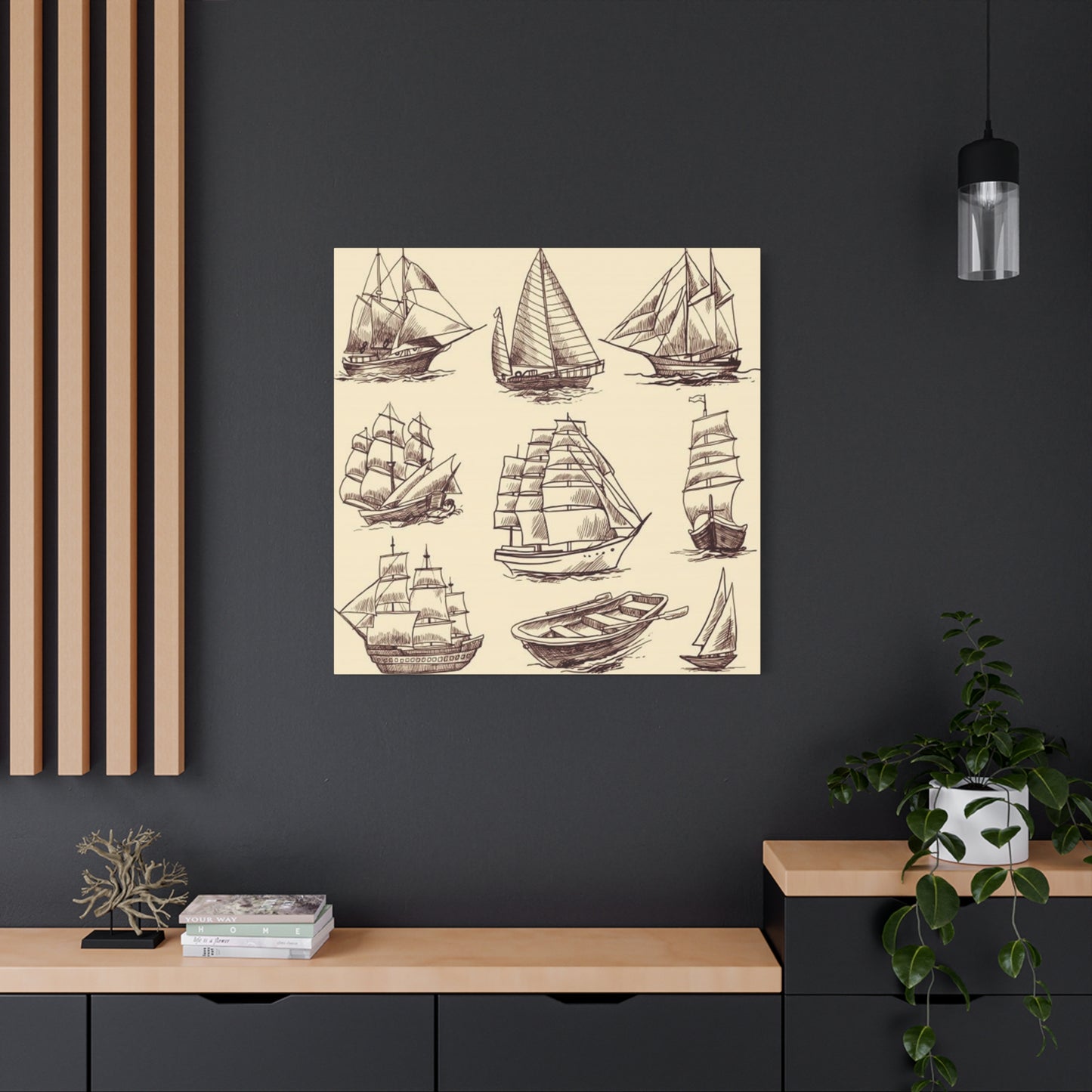Sailing Ship Paintings Wall art: Bringing Maritime Beauty Into Your Living Space
The allure of maritime artwork has captivated homeowners and art enthusiasts for centuries. There is something inherently peaceful yet adventurous about images of vessels gliding across open waters, their sails billowing with wind, their hulls cutting through waves beneath expansive skies. Whether you are drawn to the historical significance of these magnificent crafts or simply appreciate the aesthetic beauty they bring to interior spaces, incorporating sailing ship paintings into your home can create an atmosphere that is both sophisticated and calming.
Maritime artwork serves multiple purposes in contemporary home design. Beyond mere decoration, these pieces tell stories of exploration, adventure, and humanity's enduring relationship with the sea. They evoke feelings of freedom, wanderlust, and tranquility while adding visual interest to walls that might otherwise remain bare. For those who have spent time near coastal regions or harbor fond memories of ocean voyages, these artworks can serve as meaningful reminders of cherished experiences. Even for those without personal connections to seafaring life, the universal appeal of ships navigating through water resonates on a deeply human level.
The versatility of sailing ship artwork makes it suitable for virtually any room in your home. From living rooms and dining areas to bedrooms, offices, and hallways, these pieces adapt to various design schemes and architectural styles. Whether your interior leans toward traditional elegance, coastal casual, modern minimalism, or eclectic bohemian, there exists a style of maritime painting that will complement your existing decor while adding a distinctive focal point.
This comprehensive exploration will guide you through the many facets of sailing ship paintings, helping you understand how to select pieces that align with your personal taste, how to incorporate them effectively into different spaces, and how to appreciate the artistic and historical significance these works carry. From dramatic storm scenes that command attention to gentle sunrise vistas that inspire contemplation, the world of maritime art offers endless possibilities for enhancing your living environment.
Sailing Ships: Art That Moves You
The emotional resonance of sailing ship artwork extends far beyond simple visual appeal. These paintings possess a unique ability to transport viewers to distant shores, stormy seas, and peaceful harbors without ever leaving the comfort of home. The movement captured in these works, whether subtle or dramatic, creates a sense of energy that static decorative elements cannot replicate.
When you observe a well-executed painting of a sailing vessel, your eye naturally follows the lines of the rigging, traces the curve of the sails, and imagines the vessel's journey across the depicted waters. This visual journey creates an engaging experience that draws you in repeatedly, revealing new details with each viewing. The best maritime paintings achieve a balance between technical accuracy and artistic interpretation, honoring the physical reality of ships while imbuing them with emotional significance.
The psychological impact of maritime imagery has been studied extensively by environmental psychologists. Artwork depicting water scenes has been shown to reduce stress levels, lower blood pressure, and promote feelings of calm and well-being. The combination of water elements with the structured beauty of ships creates a particularly effective therapeutic visual experience. The horizon lines common in these compositions provide a sense of perspective and possibility, while the ships themselves represent human ingenuity and determination.
Different styles of sailing ship paintings evoke distinct emotional responses. Impressionistic renderings with loose brushwork and vibrant colors tend to feel more energetic and contemporary, appealing to those who appreciate modern artistic approaches. Realistic depictions with meticulous attention to detail satisfy viewers who value historical accuracy and technical skill. Abstract interpretations that distill vessels down to their essential forms and colors appeal to minimalist sensibilities while still maintaining the essence of maritime subjects.
The movement inherent in sailing ship paintings comes not just from depicted action but from compositional choices made by the artist. Diagonal lines created by tilting masts and angled sails generate dynamic tension. Curved forms of billowing canvas create rhythm and flow. The contrast between the solid structure of the ship and the fluid nature of water and sky produces visual interest that keeps the eye engaged. These elements combine to create artwork that truly moves viewers both literally, through guided visual pathways, and figuratively, through emotional engagement.
Collecting sailing ship paintings can become a deeply personal journey. As you acquire pieces over time, you develop a more refined understanding of what speaks to you emotionally. Some collectors gravitate toward specific eras of seafaring history, building collections that span from ancient galleons to modern yachts. Others focus on particular artistic styles or specific artists whose work resonates with them. Still others collect based on color palettes that coordinate with their home interiors, creating cohesive visual narratives throughout their living spaces.
Ocean Breeze Captured in Paintings
The sensation of cool, salt-tinged air moving across your skin is one of the ocean's most memorable sensory experiences. Talented maritime artists possess the remarkable ability to suggest this invisible element through visual means, creating paintings that seem to carry the essence of sea breezes within their compositions. Through careful attention to details like rippling water, streaming flags, and windswept sails, these works evoke the atmospheric conditions that make coastal environments so refreshing and invigorating.
Artists employ various techniques to suggest movement and air flow in their sailing ship paintings. The direction and intensity of brushstrokes can indicate wind speed and direction, with more vigorous, gestural marks suggesting stronger breezes and gentler, flowing strokes implying calm conditions. The angle at which sails are depicted reveals information about wind strength, with taut, fully extended canvas indicating robust winds and slack, partially furled sails suggesting lighter air. These visual cues work subconsciously on viewers, creating impressions of atmospheric conditions without requiring explicit thought.
Color choices play a significant role in conveying the feeling of ocean breezes. Cool blues and greens dominate seascapes, naturally evoking the refreshing quality of maritime air. Artists who incorporate touches of white into their wave depictions suggest the spray created when wind whips across water surfaces. The treatment of skies provides additional atmospheric information, with streaky clouds indicating wind movement across the heavens and crisp, clear blue expanses suggesting still, calm conditions that allow heat and humidity to settle.
The inclusion of secondary elements enhances the sensation of breeze in maritime paintings. Seabirds shown with outstretched wings riding air currents add movement and life to compositions. Flags and pennants streaming from ships' masts provide clear visual indicators of wind direction and strength. Even the postures of any human figures depicted on deck can suggest atmospheric conditions, with sailors leaning against strong winds or standing casually in calm weather, their clothing and hair affected by surrounding air movement.
Light plays a crucial role in capturing the ethereal quality of ocean breezes. Coastal light has a particular clarity and brightness created by moisture in the air and the reflective properties of water surfaces. Artists who successfully capture this luminous quality create paintings that seem to glow from within, suggesting not just the visual appearance of maritime scenes but the atmospheric conditions that make coastal environments feel so distinctly different from inland locations. The sparkle of sunlight on wind-ruffled water creates patterns that draw the eye and suggest constant, subtle motion.
Nautical Art for Every Room
The adaptability of sailing ship paintings makes them suitable for virtually any space within your home. Each room presents unique opportunities and considerations for displaying maritime artwork, and understanding how to match pieces to specific environments ensures maximum visual impact and enjoyment. The key lies in considering factors like room size, existing decor, lighting conditions, and the emotional atmosphere you wish to create.
Living rooms serve as primary gathering spaces where families relax and guests are entertained, making them ideal locations for significant maritime pieces. Larger canvases work well above sofas or fireplaces, creating focal points that anchor seating arrangements. The scale of artwork should be proportional to furniture and wall space, with pieces that are too small appearing lost and those that are too large overwhelming the room. Color coordination between the painting and existing furnishings creates cohesion, while complementary colors add visual interest without clashing.
Dining rooms benefit from sailing ship paintings that create contemplative, conversation-friendly atmospheres. Scenes depicting calm waters and peaceful sailing conditions promote relaxation during meals, while more dramatic compositions can energize formal dinner parties. The positioning of artwork should consider sight lines from seated positions, ensuring that diners can comfortably view and appreciate pieces without craning their necks. Multiple smaller paintings arranged in groupings can work effectively in dining spaces, creating gallery wall effects that add visual interest to what might otherwise be plain expanses.
Bedrooms require careful consideration of emotional tone when selecting maritime artwork. Most people prefer calming, restful imagery in sleeping spaces, making sunrise scenes, gentle harbor views, and peaceful sailing compositions ideal choices. The colors in bedroom artwork should promote relaxation rather than stimulation, with softer blues, greens, and neutral tones generally more appropriate than intense, vibrant hues. Placement above the headboard creates a focal point without interfering with the restful quality of the space, while artwork on walls opposite the bed provides something pleasant to contemplate when first waking.
Serene Seas: Ship Paintings to Relax
The therapeutic benefits of viewing peaceful maritime scenes have been documented through numerous studies in environmental psychology and art therapy. Paintings depicting ships on calm waters under clear skies offer viewers visual sanctuaries where stress dissipates and mental clarity emerges. These serene compositions serve as windows to tranquil worlds, providing psychological escape from the demands of daily life without requiring physical travel.
The elements that create relaxing maritime paintings work together in harmony rather than tension. Horizontal compositions emphasize the calm quality of scenes, with horizon lines dividing sky and water in balanced proportions. Ships depicted in these peaceful settings usually appear stable and secure, sailing purposefully but without urgency across glassy or gently rippling water surfaces. The absence of dramatic weather conditions, aggressive waves, or other threatening elements allows viewers to experience the scene without activation of stress responses.
Color psychology plays a fundamental role in creating relaxing maritime artwork. Blues ranging from pale sky tones to deeper ocean hues naturally promote calmness and reduce anxiety. Studies have shown that exposure to blue colors can actually lower blood pressure and heart rate, making these paintings physiologically beneficial as well as aesthetically pleasing. Greens, particularly in their softer, more muted variations, add to the peaceful quality while suggesting the presence of coastal vegetation or the particular hue of shallow tropical waters. Neutral tones including soft grays, warm beiges, and gentle whites provide balance without introducing stimulating elements.
The treatment of light in serene maritime paintings contributes significantly to their calming effects. Soft, diffused lighting suggests either early morning conditions when the world is just awakening or late afternoon as day transitions toward evening. These transitional times carry inherent peacefulness, associated with rest and renewal. Harsh midday light tends to be less relaxing, creating stark contrasts and intense colors that can feel more energizing than calming. Artists who master subtle tonal variations create atmospheric effects that envelop viewers in gentle visual experiences.
The scale and proportion of ships within relaxing maritime compositions deserves careful consideration. Vessels that dominate scenes can feel overwhelming, while those that appear appropriately scaled within their environments create balance. Ships positioned in middle distances allow viewers to appreciate both the craft itself and the surrounding natural setting, neither element overpowering the other. This balanced relationship between human-made vessels and natural environments reflects harmony rather than conflict, reinforcing peaceful emotional tones.
Minimalist approaches to maritime painting can enhance relaxing qualities. Compositions that eliminate unnecessary details and focus on essential elements create visual calm through simplicity. Smooth water surfaces rendered with subtle gradations rather than choppy texture suggest tranquility. Skies free from dramatic cloud formations or intense color variations provide restful expanses for the eye. Ships depicted with clean, simplified forms emphasize elegant beauty without the visual complexity that can feel mentally taxing.
Bold Ship Art for Statement Walls
When you want artwork that commands attention and becomes the undisputed focal point of a room, dramatic sailing ship paintings deliver powerful visual impact. These bold pieces feature intense colors, dynamic compositions, or impressive scales that immediately draw the eye and make memorable impressions. Statement walls anchored by striking maritime artwork establish the character of entire spaces, with all other design elements relating to these commanding pieces.
The characteristics that make maritime paintings function as statement pieces include several key elements. Size matters significantly, with larger canvases naturally attracting more attention than modest pieces. A substantial painting spanning five or six feet in width becomes impossible to overlook, dominating walls and establishing visual hierarchy within rooms. However, size alone doesn't create statement impact; the subject matter, color intensity, and compositional drama must also support a commanding presence.
Color intensity distinguishes statement maritime paintings from more subtle variations. While peaceful, serene pieces rely on soft, muted palettes, bold works embrace vibrant, saturated hues that energize spaces. Deep navy blues contrasting with bright whites in crashing waves create visual electricity. Rich sunset oranges and reds illuminating ships and water surfaces inject warmth and passion. Even unexpected color choices, like ships rendered in jewel tones against metallic backgrounds, can create striking contemporary effects that challenge traditional maritime art expectations.
Compositional drama transforms sailing ship paintings into arresting visual experiences. Vessels shown at severe angles, tilting against powerful waves, create tension and excitement. Perspectives that place viewers at unusual vantage points, looking down from above or up from water level, provide fresh viewpoints that demand attention. Asymmetrical arrangements with ships positioned off-center, balanced by dramatic sky or water treatments, create dynamic visual energy that static, centered compositions lack.
Vintage Sailing Paintings Come Alive
Historical maritime paintings possess distinctive charm that modern reproductions and contemporary works cannot fully replicate. These pieces carry the patina of age, both literally in their physical condition and figuratively in their artistic approaches, reflecting the periods during which they were created. Collecting and displaying authentic vintage sailing paintings connects homes to artistic traditions spanning centuries while adding sophisticated, cultured character to interior spaces.
The golden age of maritime painting spanned from the seventeenth through nineteenth centuries, when European and American artists documented the sailing vessels that served as primary means of long-distance transportation and naval power. Dutch masters like Willem van de Velde the Younger created extraordinarily detailed paintings of naval battles and merchant vessels, their work characterized by meticulous accuracy and dramatic composition. British artists including J.M.W. Turner brought romantic sensibility to maritime subjects, emphasizing atmospheric effects and emotional resonance over documentary precision.
American maritime painting flourished during the nineteenth century as the young nation's merchant fleet expanded globally. Artists like Fitz Henry Lane and James Buttersworth captured the elegant lines of clipper ships and racing yachts with combination of technical accuracy and aesthetic beauty. Their work documents specific vessels while also serving as fine art appreciated for compositional skill and artistic vision. These paintings provide windows into America's maritime heritage while functioning as decorative elements in contemporary homes.
Authenticating vintage sailing paintings requires expertise and careful examination. Original period pieces demonstrate characteristics consistent with their purported ages, including period-appropriate materials, techniques, and styles. Canvas weave, paint composition, and craquelure patterns all provide clues about a painting's age and authenticity. Signatures should match documented examples of artists' work, though unsigned pieces may still possess significant value if other authentication factors align. Provenance, the documented history of ownership, adds credibility and often increases value substantially.
The condition of vintage paintings varies widely based on their age, prior care, and storage conditions. Some examples remain in excellent condition, their colors vibrant and surfaces intact. Others show age through darkened varnishes, minor paint losses, or structural issues with canvas or support panels. Professional conservation can address many condition problems without compromising the paintings' authentic character. However, improper restoration that replaces too much original material or employs inappropriate techniques diminishes both historical value and aesthetic appeal.
Collecting vintage sailing paintings can become an engaging pursuit that combines art appreciation with historical research. Learning about specific artists, their careers, their techniques, and their places within broader art historical narratives deepens appreciation for collected works. Understanding the types of vessels depicted, the historical contexts in which they sailed, and their significance to maritime history adds additional layers of meaning. This intellectual engagement transforms casual decoration into serious collecting with educational and investment dimensions.
Sailing Ships in Stormy Seas: Dramatic Art
Few subjects in maritime painting match the raw drama of vessels battling through tempestuous conditions. These powerful compositions capture nature at its most formidable, pitting human skill and engineering against overwhelming natural forces. Storm scenes provide opportunities for artists to demonstrate technical virtuosity while creating emotionally charged works that viewers find simultaneously frightening and exhilarating.
The artistic challenges of depicting storms at sea are substantial. Artists must convey motion, violence, and chaos while maintaining compositional coherence that allows viewers to comprehend the scene. The movement of multiple elements—ship, waves, wind, rain, and sky—must be coordinated in ways that feel authentic and powerful rather than confused or static. Color choices become complicated as storm conditions reduce the bright, varied hues of fair weather to more monochromatic palettes dominated by grays, dark blues, and the white of breaking water.
Historical maritime storm paintings often carried symbolic or narrative significance beyond their dramatic visual appeal. Many depicted actual historical events—famous shipwrecks, naval battles fought in adverse conditions, or remarkable survival stories. These paintings served documentary purposes, recording events before photography made visual documentation routine. They also functioned as moral tales, demonstrating human courage and resilience in the face of adversity or illustrating the consequences of hubris and poor judgment.
The physical characteristics of storm waves present specific artistic challenges and opportunities. The size, shape, and behavior of water in extreme conditions differs dramatically from calm seas. Artists must understand how wind shapes water into towering crests with streaming spray, how waves break and collapse in foam and chaos, and how the surface patterns of churning water create texture and movement. The most convincing storm paintings demonstrate this understanding through accurate yet artistically interpreted wave forms.
Light in storm scenes often provides the most dramatic compositional elements. Breaks in cloud cover allowing shafts of sunlight to illuminate portions of scenes create theatrical effects and guide viewers' attention. Lightning, either visible as actual bolts or implied through illuminated clouds, adds elemental danger to compositions. The overall darkness of storm conditions throws any lighter elements—breaking waves, ships' sails, illuminated portions of sky—into high relief, creating strong value contrasts that increase visual drama.
Minimalist Ship Paintings for Modern Homes
The minimalist aesthetic that dominates contemporary design extends to maritime art, where simplified forms, reduced color palettes, and essential compositions create sophisticated pieces suited to modern interiors. These streamlined interpretations of sailing ship subjects eliminate unnecessary detail, focusing on core elements that capture the essence of maritime beauty without traditional elaboration. The result combines the timeless appeal of nautical subjects with the clean, uncluttered sensibility that defines contemporary taste.
Minimalist maritime paintings employ several characteristic approaches to achieve their distinctive appearance. Simplified silhouettes reduce ships to basic geometric forms, eliminating the rigging details, deck structures, and decorative elements that define traditional representations. These abstracted vessels maintain recognizable nautical character while achieving the geometric purity that minimalism favors. Against similarly simplified backgrounds of flat or subtly graduated color, these ships appear as elegant compositional elements rather than realistic depictions.
Color reduction plays a fundamental role in minimalist maritime art. Rather than attempting to capture the full range of hues visible in actual maritime scenes, minimalist works employ limited palettes of two to four colors. Monochromatic schemes exploring variations of single colors create sophisticated, unified compositions. Analogous color combinations using closely related hues maintain harmony while providing enough contrast for visual interest. Even when multiple distinct colors appear, they're typically presented in clearly defined areas rather than blended gradations, maintaining the clarity and simplicity that minimalism requires.
Negative space assumes compositional importance in minimalist sailing ship paintings. Rather than filling every area with detail or activity, these works embrace empty space as an active design element. Ships might appear small within large expanses of simplified sky or water, emphasizing their scale relationship to surrounding vastness. This generous use of empty space creates breathing room that allows the depicted elements to achieve maximum impact through isolation rather than accumulation.
Line quality in minimalist maritime work tends toward clean, precise execution rather than loose, gestural mark-making. Whether defining the edge of a sail, the boundary between water and sky, or the profile of a hull, lines appear deliberate and controlled. This precision creates orderly, calm compositions that align with minimalist principles of intentionality and reduction. The absence of visible brushwork or textural variation maintains surfaces that appear smooth and refined.
Sailing Scenes with Bright, Bold Colors
While traditional maritime painting often emphasized realistic color representation of seas, skies, and vessels, contemporary approaches embrace vibrant, intensified palettes that inject energy and personality into nautical subjects. These boldly colored works transform familiar maritime imagery into eye-catching statements that enliven modern interiors with their fearless use of unexpected hues. Rather than seeking to document reality, these paintings interpret it through saturated colors that express emotional responses to seafaring subjects.
The psychology of color intensity reveals why bright maritime paintings create such powerful impacts. Saturated colors trigger stronger emotional responses than muted or neutral hues, activating visual processing areas of the brain more extensively. Warm colors like oranges, reds, and yellows generate feelings of energy, enthusiasm, and warmth. Cool but intense blues and greens create freshness, vitality, and clarity. When applied to sailing ship subjects, these vibrant colors transform traditionally staid imagery into dynamic, engaging artwork.
Artists working with bold color palettes in maritime subjects employ various approaches to maintain compositional coherence while maximizing visual impact. Complementary color schemes pairing opposites on the color wheel create maximum contrast and vibrancy. Orange sails against deep blue seas practically vibrate with energy. Purple-tinted skies surrounding yellow-hued vessels create unexpected but harmonious combinations. These relationships between colors intensify each hue, making both appear more saturated than they would in isolation.
Analogous color schemes using closely related hues offer alternative approaches to bold maritime painting. Compositions dominated by various blues ranging from cyan to navy with touches of green create cohesive yet varied color experiences. Ships, water, and sky rendered in different values and saturations of related colors maintain unity while providing enough variation to define forms and create interest. These harmonious schemes feel less jarring than complementary approaches while still delivering visual punch through color saturation.
Unexpected color choices challenge traditional maritime painting conventions while creating memorable, distinctive works. Ships rendered in hot pinks or electric purples rather than natural wood tones immediately signal contemporary, artistic interpretation rather than realistic representation. Waters shown in turquoise, coral, or even metallic gold abandon naturalism for expressive impact. These non-literal color choices free both artists and viewers from expectations of accuracy, allowing pure aesthetic experience to dominate.
Nautical Paintings for Coastal-Themed Interiors
Coastal design schemes celebrate the relaxed, natural beauty of seaside living, incorporating elements that evoke ocean breezes, sandy beaches, and maritime traditions. Sailing ship paintings serve as natural focal points in these environments, reinforcing thematic unity while adding authentic nautical character. Selecting and displaying maritime artwork in coastal interiors requires understanding both the decorative style's defining characteristics and how various types of paintings complement or enhance these elements.
The color palette of coastal design typically emphasizes whites, creams, and soft neutrals as foundational elements, layered with blues ranging from pale sky tones to deeper navy, sea greens from soft sage to turquoise, and sandy beiges and taupes. Maritime paintings that incorporate these colors integrate seamlessly into coastal schemes, their palettes echoing surrounding decor. However, paintings needn't match perfectly; slight variations add visual interest while maintaining overall harmony. The key lies in ensuring that artwork contains at least some colors that connect with the broader palette.
Natural materials figure prominently in coastal design, including weathered wood, sea grass, linen, cotton, and rope. Maritime paintings in rustic or driftwood-style frames complement these organic textures, creating cohesive visual narratives. The frames themselves become part of the decorative story, their worn finishes and natural materials echoing other design elements throughout the space. Some coastal interiors benefit from more refined framing in painted white or soft gray finishes that maintain the light, airy quality central to the style.
The level of formality in coastal design varies from casual beach-cottage aesthetic to more sophisticated Hamptons or Cape Cod styles. Sailing ship paintings should align with the chosen approach. Casual coastal schemes accommodate more relaxed artistic treatments including watercolors, prints, and folk-art style paintings with their informal charm. Sophisticated coastal interiors call for more refined artwork including original oils, professional photography, or high-quality giclée prints in elegant presentations. Matching artwork formality to overall design prevents discordant notes that undermine cohesive decoration.
Scale and proportion considerations ensure that maritime paintings enhance rather than overwhelm coastal spaces. Large open-concept areas common in coastal homes can accommodate substantial artworks that hold their own in expansive rooms. Smaller cottage-style spaces require appropriately scaled pieces that add interest without dominating limited square footage. Gallery wall arrangements of multiple smaller pieces work effectively in coastal design, creating collected-over-time appearances that suit the style's relaxed character.
Dynamic Ship Paintings with Motion
The inherent movement of sailing vessels creates natural opportunities for artists to capture and convey motion through static two-dimensional artwork. Dynamic maritime paintings that successfully suggest movement engage viewers more deeply than static compositions, creating visual experiences that feel alive and energetic. Understanding how artists achieve these effects helps in selecting pieces that bring vitality to interior spaces while appreciating the technical skill required to freeze motion convincingly on canvas.
Compositional techniques play fundamental roles in suggesting movement. Diagonal lines create dynamism that horizontal and vertical elements cannot match. Ships depicted at angles, heeling in response to wind, immediately convey motion and energy. Diagonal arrangements of clouds, wave patterns, and even horizon lines add to the sense of movement through space. Artists who fill compositions with diagonal elements create restless, active images that draw eyes along multiple pathways simultaneously.
The depiction of water itself offers primary opportunities for suggesting motion in maritime paintings. Still water appears flat or gently rippling with minimal surface texture. Moving water displays specific characteristics depending on speed and conditions: gentle swells creating rhythmic undulations, breaking waves with foam and spray, or turbulent storm conditions with chaotic surface patterns. Artists who understand water behavior and can represent it convincingly create paintings where viewers sense movement even in perfectly still images.
Sails provide crucial information about wind and motion in ship paintings. Fully extended sails billowing with captured wind clearly indicate forward momentum. The shape of the canvas, whether smoothly curved or fluttering at edges, reveals wind strength and direction. Partially furled or reefed sails suggest changing conditions or deliberate speed reduction. Artists who render sails with attention to how fabric responds to air movement create more convincing and dynamic compositions than those who treat sails as flat geometric shapes.
The treatment of spray, foam, and water droplets enhances motion suggestions in maritime paintings. Spray streaming from bow as a ship cuts through waves indicates forward speed. Foam patterns in the wake trailing behind vessels reveal both speed and directional information. Water droplets suspended in air, though impossible to see in reality without high-speed photography, can be artistically suggested through painting techniques that create impressions of moisture in atmosphere. These details add visceral, almost tactile qualities to motion depiction.
Large Sailing Ship Canvases for Impact
Monumental maritime paintings commanding entire walls create dramatic impacts impossible to achieve with modestly sized artwork. These substantial pieces transform spaces through their sheer physical presence, becoming architectural elements as much as decorative objects. Understanding how to select, display, and integrate oversized sailing ship canvases requires considering practical logistics alongside aesthetic factors to ensure successful results that justify the significant investment these impressive works represent.
The definition of large-scale artwork varies depending on wall size and room proportions, but generally includes pieces measuring at least five feet in their smaller dimension. Truly monumental works might span eight to twelve feet or more, approaching mural scale. These dimensions create challenges for artists, who must maintain compositional integrity and technical quality across vast surfaces while ensuring that works remain effective from typical viewing distances rather than requiring viewers to stand uncomfortably far away to appreciate the full image.
The practical considerations of acquiring and installing large maritime canvases begin with transportation and delivery. Standard doorways measure only thirty-six inches wide, making passage impossible for many oversized pieces. Removing doors from hinges, measuring stairwell dimensions, and planning installation routes become necessary before purchasing large artwork. Professional art installation services possess equipment and expertise for safely handling substantial pieces, protecting both artwork and home from damage during difficult maneuvering into final positions.
Wall structure must support the weight of large canvases, which can exceed fifty pounds or more for substantial works in heavy frames. Locating wall studs and using appropriate heavy-duty hanging hardware ensures secure mounting that won't fail over time. Professional installers use specialized systems including heavy-duty wire, multiple hanging points, and wall anchors rated for appropriate weight loads. For extremely large or valuable pieces, installing permanent hanging systems during construction or renovation provides optimal security.
Ships Sailing at Sunrise: Inspiring Art
The magical quality of dawn light has captivated maritime artists throughout history, providing opportunities to depict ships in the most ethereal and inspiring atmospheric conditions nature offers. Sunrise paintings combine the timeless appeal of sailing vessels with the universal human response to new beginnings, hope, and the promise of fresh starts that each dawn represents. These uplifting images bring positive energy to interior spaces while showcasing some of the most technically challenging and aesthetically rewarding subjects in maritime art.
The color palette of sunrise maritime paintings distinguishes them immediately from works depicting other times of day. Dawn light progresses through distinctive phases, from deep pre-sunrise blues and purples to the first warm touches of orange and pink as the sun approaches the horizon, through to the brilliant gold and coral hues of the sun's emergence, and finally to the clear, fresh light of early morning. Artists who capture these transient color progressions create paintings that glow with internal luminosity, their warm tones energizing spaces even in the absence of actual sunlight.
The atmospheric quality of dawn creates unique painting opportunities through the interplay of light and moisture in coastal air. Morning mist softening forms and creating gauzy, indistinct backgrounds contrasts beautifully with ships rendered in clearer, more defined detail as focal points. Reflections on calm morning water surfaces mirror and amplify the spectacular sky colors. The low angle of early sunlight creates long shadows and dramatic side-lighting that emphasizes the three-dimensional forms of vessels and waves, adding sculptural quality to compositions.
Symbolic and emotional meanings attached to sunrise imagery enhance the appeal of dawn maritime paintings. The new day represents fresh opportunities, renewed hope, and positive outlook. Ships sailing toward the rising sun suggest optimism, progress, and purposeful journey toward goals. These associations make sunrise paintings particularly appropriate for spaces where motivation and positive attitude matter—home offices, exercise rooms, and areas dedicated to creative pursuits. Beginning each day by viewing inspiring sunrise imagery can influence mood and mindset beneficially.
Technical challenges of painting sunrise scenes require artists to understand and convincingly render rapidly changing light conditions. The warm colors of dawn illuminate portions of ships, water, and sky while leaving other areas in cooler shadow, creating strong color temperature contrasts that define forms and create visual interest. The sun itself presents particular difficulties, as its brilliant intensity cannot be literally matched with paint. Artists must suggest rather than replicate solar brilliance through surrounding color relationships and value contrasts that make the implied light source feel convincing.
Classic Sailing Vessels on Canvas
Historical sailing ships represent remarkable achievements in engineering, craftsmanship, and design, their elegant forms evolved over centuries to harness wind power effectively while withstanding the ocean's demands. Paintings depicting these classic vessels preserve their beauty and significance for contemporary audiences, serving simultaneously as artistic works, historical documents, and tributes to maritime heritage. Understanding the various types of traditional sailing craft and their distinguishing characteristics enriches appreciation for artwork featuring these magnificent subjects.
Tall ships, with their multiple masts and complex rigging arrangements, represent the pinnacle of traditional sailing vessel development. These impressive craft include ships, barques, and fully rigged vessels whose towering masts once carried them across oceans on trading and exploration voyages. Artists who paint tall ships face challenges in accurately rendering their complicated rigging systems while maintaining artistic composition and visual clarity. The most successful works balance technical accuracy with aesthetic beauty, creating images that satisfy both maritime historians and art collectors.
Schooners, with their distinctive fore-and-aft rigging, represent quintessentially American sailing vessels that dominated coastal trade and fishing fleets during the nineteenth century. Their graceful lines and efficient sail plans made them favorites of artists, who appreciated their elegant proportions and the beautiful curves of their hulls and sails. Paintings of schooners racing across sparkling seas or working in fog-shrouded fishing grounds capture important aspects of maritime history while creating artwork with strong visual appeal.
Clipper ships, designed for maximum speed during the mid-nineteenth century, featured sleek hulls, towering masts, and vast sail areas that pushed the limits of traditional sailing vessel performance. Their brief glory days before steam power rendered them obsolete have been immortalized in countless paintings celebrating their beauty and speed. Artists often depict clippers charging through heavy seas with every inch of canvas set, creating dramatic, energetic compositions that capture the excitement these vessels generated.
Sloops and cutters, single-masted vessels common in naval and recreational sailing, offer simpler subjects for maritime artists while still providing pleasing proportions and sailing elegance. Their less complex rigging makes them more accessible subjects for beginning marine artists while allowing masters to demonstrate skill through accurate depiction of sailing dynamics and hull forms. These smaller vessels often appear in coastal scenes and harbor views, adding human scale and nautical interest to broader seascapes.
Naval vessels including frigates, ships-of-the-line, and other warships represent another category of classic sailing subjects. Their military purpose resulted in different design priorities from merchant vessels, with gun ports, reinforced construction, and fighting platforms distinguishing their appearances. Historical naval battles and significant vessels provide subjects for dramatic paintings that combine maritime art with military and national history, appealing to collectors interested in these specific aspects of the past.
Traditional working craft including fishing boats, coastal traders, and various regional vessel types offer glimpses into everyday maritime life beyond the glamorous world of racing yachts and naval conflicts. These humble vessels performed the essential work of feeding populations and moving goods, their designs adapted to specific local conditions and purposes. Artists who depict working craft create important documentary records while finding beauty in utilitarian forms that honest labor shaped.
How to Choose Ship Paintings for Decor
Selecting sailing ship paintings that successfully enhance your home requires balancing multiple factors including personal taste, existing decor, practical considerations, and budget limitations. The process need not feel overwhelming; understanding key selection criteria and following a systematic approach ensures that chosen artwork meets both aesthetic and functional requirements while reflecting your individual style and maritime interests. This guidance helps navigate the extensive maritime art market to find pieces that genuinely work for your specific situation.
Personal connection to artwork should guide selection more than any other factor. You will live with chosen pieces daily, viewing them repeatedly over months and years. Paintings that resonate emotionally, remind you of meaningful experiences, or simply bring you joy each time you see them justify selection regardless of whether they conform to design rules or current trends. Trust your instincts; if a painting consistently draws your attention and makes you feel positive when viewing it, that piece deserves serious consideration even if it doesn't match your sofa perfectly.
Existing room decor establishes parameters for artwork selection without necessarily dictating specific choices. Identify your room's dominant colors, noting both wall colors and major furniture pieces. Determine whether your decorating style tends toward traditional, contemporary, transitional, coastal, farmhouse, or eclectic approaches. Maritime paintings that contain colors appearing elsewhere in the room will integrate more easily than pieces in completely unrelated palettes. However, artwork can introduce new accent colors that breathe fresh life into established schemes, so don't feel constrained to match exactly.
The size of available wall space significantly narrows appropriate artwork options. Measure your walls carefully, considering not just bare dimensions but also proportional relationships between wall size and artwork. As general guidance, artwork should span roughly two-thirds to three-quarters of the furniture width it hangs above. Pieces that are too small appear lost and insignificant, while oversized works overwhelm spaces. Consider surrounding architectural elements including windows, doors, and built-in features that affect how much uninterrupted wall space actually exists.
Viewing distance influences optimal artwork size and level of detail. Large rooms where viewers typically stand or sit fifteen or more feet from walls accommodate larger pieces with bolder compositions that remain visible from distance. Smaller, more intimate spaces where viewers are closer to walls allow appreciation of finer details in more delicate works. Match artwork scale and complexity to typical viewing distances for best results. Consider multiple viewing positions if rooms serve various functions, ensuring artwork works from all key perspectives.
Lighting conditions dramatically affect how paintings appear. Natural daylight brings out colors most accurately and changes throughout the day, creating varied appearances from morning through evening. Rooms with abundant natural light can handle darker paintings that would appear murky in dim conditions. Spaces relying on artificial lighting require consideration of color temperature, with warm bulbs enhancing warm colors in paintings and cool white light favoring blue and green tones. Test how paintings look under actual lighting conditions you'll experience rather than relying solely on gallery or store illumination.
Your budget establishes realistic parameters for acquisition. Original paintings by recognized artists command premium prices reflecting their artistic merit, rarity, and investment potential. Lesser-known artists offer original works at more accessible prices while still providing unique pieces. Limited edition prints maintain some scarcity and value while costing less than originals. Unlimited prints and reproductions provide affordable access to maritime imagery without investment consideration. All options have appropriate applications depending on your budget, collecting goals, and specific needs.
Ocean Life Through Ship Sailing Art
Maritime paintings frequently incorporate more than just vessels and water, depicting the rich marine life that shares ocean environments with sailing ships. These broader ecological contexts add interest, authenticity, and educational value to nautical artwork while creating opportunities for artists to showcase the full richness of ocean ecosystems. Understanding how marine creatures are depicted alongside ships enhances appreciation for artwork that celebrates the entirety of maritime environments rather than isolated elements.
Seabirds feature prominently in maritime paintings as natural inhabitants of coastal and ocean environments. Gulls, terns, albatrosses, and other species add life and movement to compositions while serving compositional purposes. Artists position birds to guide viewers' eyes through paintings, create depth through size variation between near and distant specimens, or add dynamic elements to otherwise static scenes. The behavior depicted provides atmospheric information, with calm, resting birds suggesting peaceful conditions and wheeling, active flocks indicating food sources or weather changes.
Marine mammals including whales, dolphins, porpoises, and seals occasionally appear in sailing ship paintings, their presence adding wonder and scale to compositions. Whales surfacing near vessels emphasize the ocean's vastness and the magnificent creatures inhabiting its depths. Dolphins playing in bow waves suggest joy and the connection between human maritime activity and natural life. These creatures remind viewers that sailors share the sea with other intelligent beings, adding dimension to what might otherwise be purely human-focused imagery.
Conclusion
In conclusion, sailing ship paintings as wall art represent an exquisite way to bring the timeless allure of the sea into your home. These artworks capture the grandeur, freedom, and adventure that define maritime life, transforming ordinary walls into windows to the vast, open ocean. By choosing sailing ship paintings for your living space, you not only enhance your décor with striking visuals but also infuse your environment with the spirit of exploration and tranquility that the sea embodies.
The beauty of sailing ships lies in their symbolism and aesthetics alike. They remind us of human ingenuity and the age-old desire to explore unknown horizons. These paintings often depict elegant vessels navigating through waves, their sails billowing in the wind, which creates a dynamic sense of movement and life. This visual energy adds a compelling narrative to any room, inviting viewers to imagine the stories behind each voyage. As such, sailing ship art resonates with those who appreciate not only beauty but also meaning in their surroundings.
One of the remarkable qualities of sailing ship paintings is their versatility in interior design. Whether your home embraces a coastal theme, rustic charm, or modern minimalism, maritime art seamlessly integrates with various décor styles. The rich textures, flowing lines, and natural color palettes found in ship paintings complement materials like wood, canvas, and linen, fostering a harmonious and inviting atmosphere. Moreover, these artworks can be the centerpiece of a room or part of a curated collection, offering flexibility to suit personal taste and space.
Beyond their decorative appeal, sailing ship paintings carry deep emotional and symbolic significance. Ships have long been metaphors for journeys—both physical and spiritual. They evoke notions of adventure, resilience, and hope, reminding us that life is a voyage filled with challenges and discovery. Displaying such art in your living space serves as a constant source of inspiration, encouraging a mindset of perseverance and openness to new experiences. It connects the viewer to a broader narrative about courage and the human spirit’s capacity to navigate through uncertainty.
In addition to symbolism, the aesthetic qualities of sailing ship paintings contribute to a calming and enriching home environment. The depiction of open waters and skies promotes a sense of freedom and expansiveness, while the intricate details of the ships encourage appreciation for craftsmanship and history. This balance between vastness and detail makes maritime art uniquely engaging, inviting viewers to lose themselves in the beauty of the scene while finding peace in its steady rhythm.
Sailing ship wall art also offers psychological benefits by bringing elements of nature indoors. Studies have shown that images of water and natural landscapes can reduce stress, enhance mood, and improve focus. The presence of maritime art in a home creates a serene backdrop that promotes relaxation and mental clarity. For those living far from the coast, such paintings serve as a connection to the ocean’s soothing presence, offering a daily reminder of nature’s calming power.
Finally, investing in sailing ship paintings is an investment in timeless elegance and cultural heritage. These artworks celebrate a rich history of seafaring and exploration that has shaped civilizations and cultures around the world. By displaying them, you honor this legacy while also expressing your own appreciation for art that transcends trends. Sailing ship paintings stand the test of time, continuously enriching interiors with their classic charm and enduring symbolism.

















